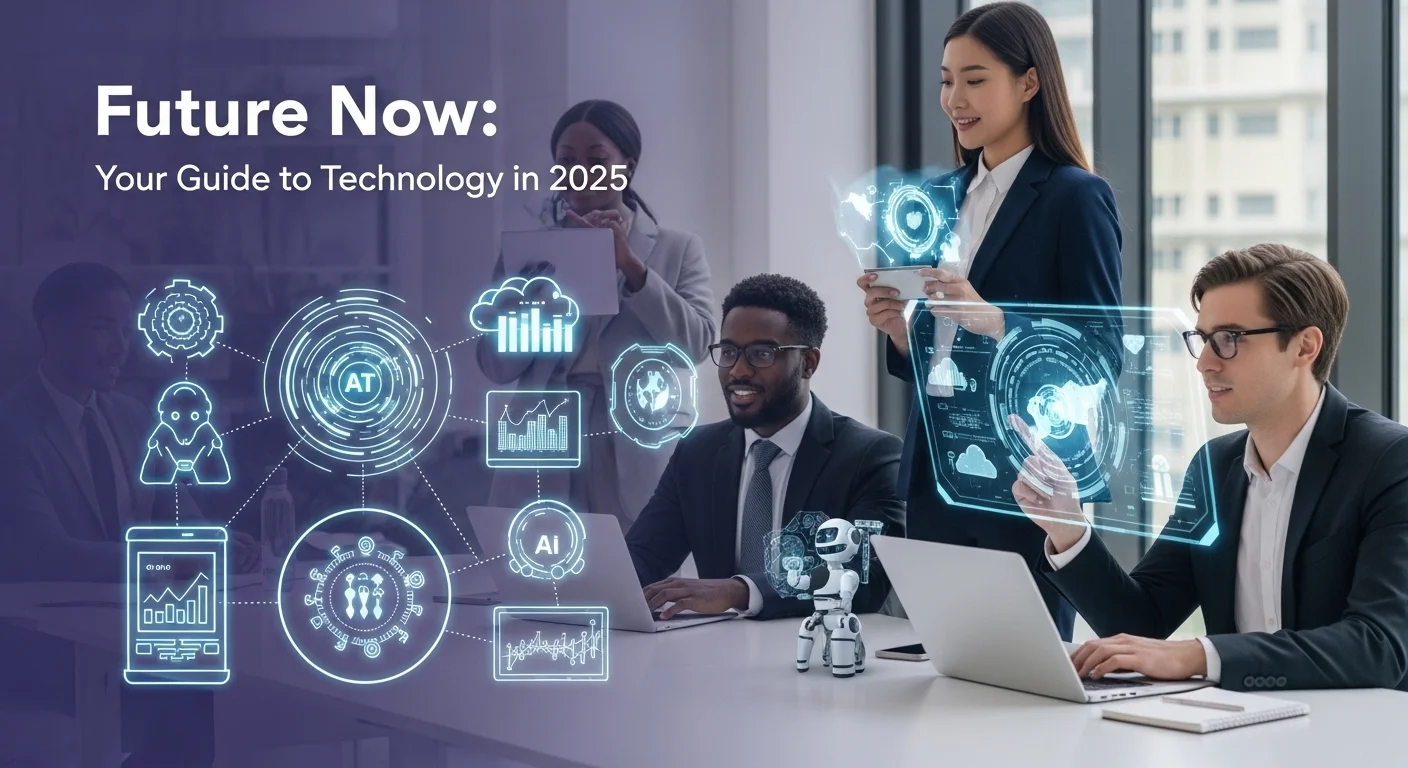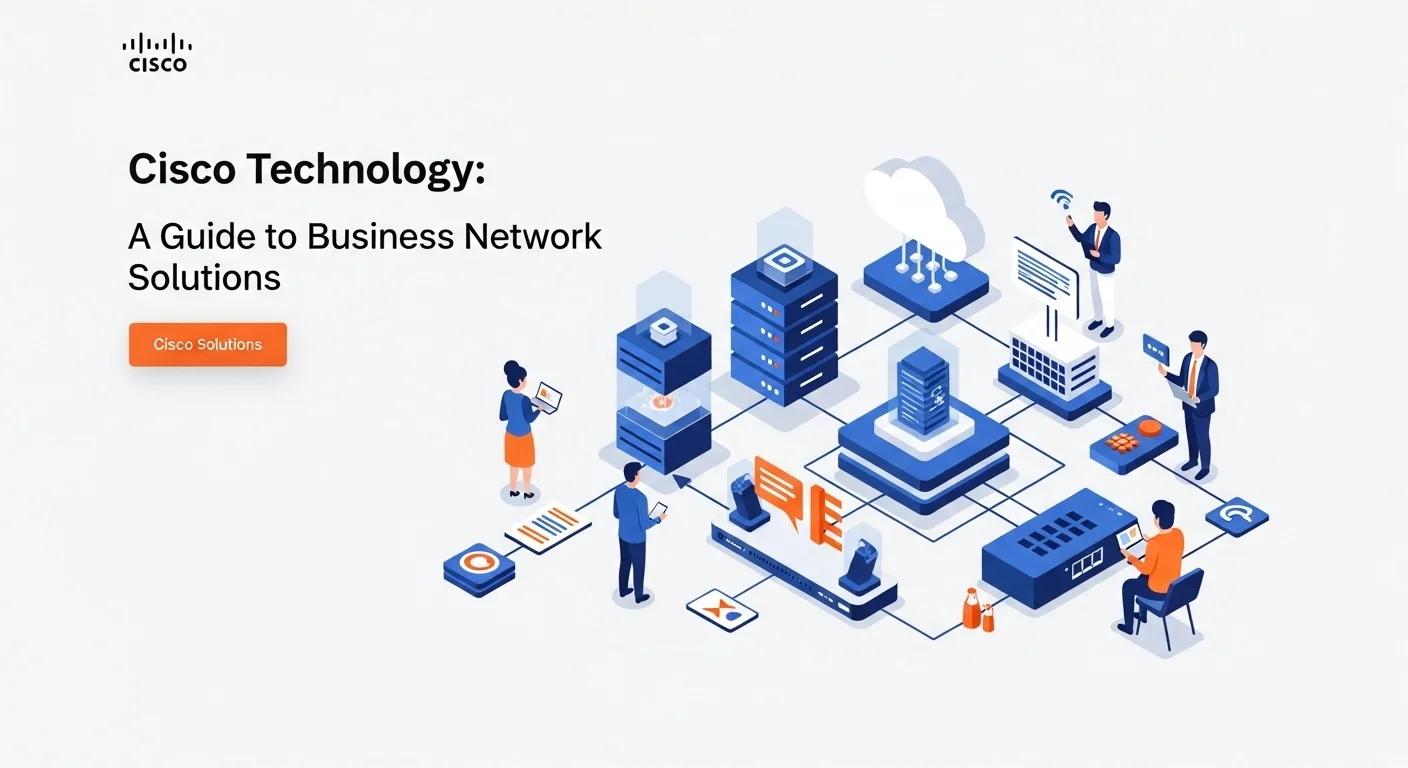What's Next in Tech? My Personal Guide to Thriving in 2025

Executive Summary
After more than two decades of analyzing the tech world, I've seen countless trends come and go. But 2025 feels different. This isn't just about faster chips or shinier gadgets; it's about a fundamental shift in how we live and work. The technologies we've been talking about for years—AI, smart everything, augmented reality—are finally hitting their stride and becoming part of our daily reality. I've put this guide together to cut through the hype and give you a clear, honest look at what truly matters. We'll explore what's coming, from the big-picture trends in the Gartner Hype Cycle to the real-world cybersecurity threats outlined by ENISA. We'll also dive into the fun stuff, like the most exciting gadgets and smart glasses on the horizon. Whether you're a business leader trying to stay competitive or just someone curious about the future, my goal is to give you the context you need to navigate 2025 with confidence.
Table of Contents
Table of Contents
- What 2025 Means for Technology
- Navigating Innovation with the Gartner Hype Cycle
- Understanding the 2025 Cybersecurity Threat Landscape
- The Rise of Consumer Tech: What Gadgets to Expect
- A Clearer Vision for Smart Glasses
- Giving the Gift of Innovation: Top Tech Gifts
- A Practical Guide to Business Technology Solutions
- Practical Tips and Strategies for Your Tech Life
What is 2025 and why is it important in Technology?
Forget the flying cars of old sci-fi movies. The year 2025 is here, and it’s the moment where the last decade of digital groundwork truly pays off. Think of it as an inflection point. Technologies that once felt like experiments, like generative AI, the Internet of Things (IoT), and augmented reality, are now becoming part of the furniture in our homes and offices. For me, what makes 2025 so critical is this convergence. It's not just one thing; it’s how hyper-automation, widespread AI, and a much-needed focus on human-friendly design and security are all maturing at once. This isn't just another year of updates; it’s a genuine shift in how we interact with the world, and understanding it is key for anyone, whether you're running a business or just trying to keep up.
The Gartner Hype Cycle 2025 Perspective: Charting the Course of Innovation
When trying to make sense of all the noise in tech, I’ve always found frameworks like the Gartner Hype Cycle incredibly useful. It’s my go-to for separating genuine breakthroughs from fleeting fads. The Hype Cycle shows us the journey of a technology through five stages: the initial spark (Innovation Trigger), the media frenzy (Peak of Inflated Expectations), the inevitable backlash when it doesn't solve everything overnight (Trough of Disillusionment), the steady climb as practical uses are found (Slope of Enlightenment), and finally, when it becomes a normal, productive tool (Plateau of Productivity).
In 2025, we're seeing some fascinating moves along this path. Take Agentic AI, a top trend Gartner is talking about. These are AI systems that don't just respond, but proactively plan and act to get things done. Imagine an AI assistant that doesn't just book a flight but also arranges the taxi and checks you into your hotel automatically. This tech is probably riding high on that Peak of Inflated Expectations, full of promise but with plenty of wrinkles to iron out. Meanwhile, Generative AI, last year's superstar, is sliding into the Trough of Disillusionment. The initial 'wow' factor is over, and now companies are grappling with the real work: finding valuable, scalable uses while managing costs and risks. For any leader, the lesson from the Gartner Hype Cycle 2025 isn't to chase every shiny new object, but to be smart about timing—investing seriously in tech that's climbing toward productivity while keeping an experimental eye on the brand-new stuff.
The Evolving Threat Landscape: Insights from the ENISA Threat Landscape 2025
Of course, with every leap forward in technology comes a new set of dangers. The European Union Agency for Cybersecurity (ENISA) does a fantastic job of mapping these out. Their ENISA Threat Landscape 2025 report is a sobering but essential read. It confirms what many of us in the field have been seeing: cyberattacks are getting smarter, using the very same AI that we're using to innovate. The usual suspects—ransomware, malware, social engineering—are still the main threats, but now they're supercharged. Think phishing emails written by AI that are so perfectly personalized they're nearly impossible to spot. As our world gets more connected with IoT devices and cloud services, the number of potential backdoors for attackers just keeps growing. ENISA highlights a scary rise in supply chain attacks, where hackers target a small, less secure partner to get to a much bigger company. In 2025, good cybersecurity isn't just a job for the IT department; it's a core business strategy. Understanding the threats detailed in the ENISA Threat Landscape 2025 report is the first step to building a defense, like a Zero Trust security model, that can actually stand up to modern attacks.
Consumer Tech Takes Center Stage: Anticipated Gadgets of 2025
On a lighter note, 2025 is shaping up to be a fantastic year for consumer gadgets. The theme I'm seeing everywhere is 'smarter and more seamless.' The world of gadgets 2025 is all about devices that fit into our lives more intuitively. Foldable phones, for instance, are moving past the early adopter phase and becoming tougher and more common. I wouldn't be surprised to see some wilder designs, like tri-fold screens, become a reality. At home, the smart device ecosystem is finally getting easier to manage thanks to the 'Matter' standard, which lets devices from different brands talk to each other. I've even seen prototypes of robot vacuums that can climb stairs or have little arms to pick up toys—wild stuff!
Health tracking is also getting more sophisticated and subtle. Smart rings are a great example, offering detailed health stats without needing a bulky watch. It’s all part of a larger trend toward what we call 'ambient computing,' where technology fades into the background, ready to help when you need it without being intrusive. The best gadgets of 2025 are those that just work, making life a little easier or more enjoyable without you having to think too much about it.
The Sharpening Vision for Smart Glasses in 2025
One of the most hyped categories for years has been smart glasses 2025, and it feels like they're finally on the cusp of being genuinely useful for more than just tech enthusiasts. The market is splitting into a few clear paths. On one side, you have stylish camera/audio glasses like the Ray-Ban Meta, which are great for capturing life's moments and listening to music without earbuds. They're more about fashion and social media. On the other side, you have true Augmented Reality (AR) glasses that overlay digital info onto the real world. I've been particularly impressed by models like the XREAL Air 2 Pro, which act as a giant, private virtual screen for gaming or work—it's like having a personal movie theater wherever you go. While the super high-end headsets like the Apple Vision Pro show the ultimate potential, these more affordable and lightweight AR glasses are what will bring the tech to the masses. In 2025, we're seeing smart glasses move beyond just fun and games into serious business applications like training and remote assistance. They still face challenges with battery life and social acceptance, but the progress is real. It's not a stretch to imagine our glasses becoming our primary screen in the not-too-distant future.
The Gift of Innovation: Trends in Tech Gifts for 2025
All these new gadgets naturally change what we look for when buying gifts. The best tech gifts for 2025 are less about novelty and more about genuine utility and personalization. I've found that one of the most appreciated gifts is something that solves a common frustration, like a powerful multi-device charger that cleans up cable clutter. A high-capacity portable power bank is another no-brainer in our constantly connected world. For the home, I'm seeing a lot of interest in smart devices that offer a unique experience, like automated grilling systems or even smart ice cream makers. There's also a cool retro-tech trend happening, with new film cameras that blend nostalgic design with modern convenience. Ultimately, the top tech gifts of 2025 are the ones that feel thoughtful—something that seamlessly fits into someone's life, solves a real problem, or just brings them a little bit of joy. From smart home gadgets to portable gaming gear, the options reflect just how diverse our relationship with technology has become.

Complete guide to 2025 in Technology and Business Solutions
As we move through 2025, it's become crystal clear that technology isn't just a tool for business—it's the entire toolbox. I've advised countless companies, and the ones that thrive are those that weave technology into the very fabric of their strategy. It’s about more than just buying the latest software; it's about building a culture of innovation. This guide is my attempt to give you a straightforward look at the key technologies and solutions that are defining business this year. We'll talk about how to actually make money with AI, how to manage your cloud costs without getting overwhelmed, and how to build a digital fortress against modern threats. Success in 2025 comes down to making smart, strategic tech decisions.
Harnessing Artificial Intelligence for Tangible Business Value
In 2025, Artificial Intelligence has finally moved from the 'what if' column to the 'how to' column. The conversation I'm having with leaders is no longer about experimenting with AI, but about deploying it to solve real problems and deliver a return on investment. With Generative AI, we're seeing marketing teams create content at scale, sales teams automate personalized outreach, and customer service centers use intelligent chatbots that actually help people. Beyond that, the real workhorse for business strategy is predictive analytics. I've seen companies use machine learning to forecast demand with incredible accuracy, preventing stockouts and saving millions. A trend I'm watching closely is 'Agentic AI,' which Gartner has spotlighted. These are AI agents that don't just analyze, they act. They can manage inventory, coordinate logistics, and handle complex workflows, freeing up your team to focus on the things humans do best. Big players like Salesforce and Microsoft are building these capabilities right into their platforms with tools like Copilot, making AI accessible to everyone. The secret I've learned is that successful AI adoption isn't about the tech itself, but about integrating it thoughtfully and training your people to use it as a powerful partner.
The Evolution of Cloud Computing: Multi-Cloud, AI-Driven, and Secure
The cloud is still the foundation of everything digital, but how we use it in 2025 has become much more sophisticated. The days of putting all your eggs in one basket (like AWS or Google Cloud) are over. Today, it's all about multi-cloud and hybrid strategies. A recent Flexera report showed that nearly 90% of enterprises are already using multiple clouds, and for good reason. It lets you pick the best tool for the job from each provider, prevents you from being locked into one vendor, and builds resilience. AI is also changing the cloud itself. Providers are now offering AI-as-a-Service (AIaaS), which means you can tap into powerful AI models without needing a team of data scientists. This is fueling everything from smarter security monitoring to systems that automatically optimize their own performance. But with all this power comes responsibility. With data breaches increasingly happening in the cloud, security is non-negotiable. We're seeing a huge push toward advanced security models like zero-trust. And with the amount of data we're creating set to hit 200 zettabytes by the end of 2025, managing cloud costs (a discipline we call FinOps) and governing that data have become essential skills for any modern business.
Building a Resilient Cybersecurity Posture Against Modern Threats
The smarter our tech gets, the smarter the threats become. The ENISA Threat Landscape 2025 report is a great resource, but it basically confirms what we're seeing on the ground: you need a proactive, multi-layered defense. The old 'castle-and-moat' security model is dead. The new standard is Zero Trust, which operates on a simple but powerful principle: 'never trust, always verify.' It means every single user and device has to prove they are who they say they are, every time. AI is a double-edged sword here. The bad guys use it to create convincing attacks, but we use it to detect threats in real-time and automate our response. A crucial piece of advice I always give is to never underestimate the human element. A huge portion of breaches start with a simple mistake. Creating a security-aware culture through ongoing training is one of the best investments you can make. You also absolutely need an incident response plan that you practice regularly. When—not if—a breach happens, you need to know exactly what to do to minimize the damage. Lastly, with supply chain attacks on the rise, you have to look beyond your own walls and vet the security of every partner and vendor you work with.
Integrating Smart Technologies: From the Office to the Frontline
The idea of a 'smart' space isn't just for our homes anymore. In 2025, businesses are using smart tech to create more efficient and pleasant workplaces. This can be as simple as smart lighting and climate control to save energy, or as advanced as automated security systems. But where I'm seeing the most exciting progress is for frontline workers. For them, smart glasses 2025 are becoming a game-changer. Imagine a technician in the field getting live guidance from an expert back at HQ, with diagrams overlaid on their vision. Or a warehouse worker using them to pick orders hands-free. The business case is becoming undeniable. It's not just specialized hardware, either. The same high-end consumer gadgets of 2025, like powerful tablets and portable monitors, are now essential for a flexible, hybrid workforce. In fact, these devices have become popular tech gifts for 2025 that companies give to employees, serving as both a reward and a productivity tool.
Strategic Planning with the Gartner Hype Cycle 2025
For any business leader, the Gartner Hype Cycle 2025 is more than just a chart; it's a strategic roadmap. I use it constantly to help companies decide where to place their bets. Understanding a technology's position on the cycle tells you when to be cautious and when to go all-in. If something is at the 'Peak of Inflated Expectations,' it's wise to run small, controlled pilot programs. But if it's on the 'Slope of Enlightenment,' where the path to value is clear, a bigger investment is probably justified. For example, Gartner has noted that over 95% of new digital work will be on cloud-native platforms by 2025. That tech is firmly on the 'Plateau of Productivity,' making it a safe and necessary investment. In contrast, something like quantum computing is still in its infancy, so you'd only want to experiment on a small scale. Using the Gartner Hype Cycle 2025 helps prevent costly mistakes, like jumping on an immature trend too early or, worse, missing a technology that's about to become essential for staying competitive. It gives everyone a shared language to talk about tech strategy, aligning the whole team on the risks and opportunities ahead.

Tips and strategies for 2025 to improve your Technology experience
In 2025, technology is woven so deeply into our lives that managing it well is a crucial life skill. It’s not just about having the latest phone; it’s about being secure, making smart choices, and using these powerful tools to your advantage. In this final section, I want to share some practical, no-nonsense tips for everyone—individuals, families, and small business owners. My goal is to help you move from just coping with technology to actually thriving with it. By adopting a few key habits, you can make your digital life more productive, enjoyable, and, most importantly, secure.
Mastering Personal Cybersecurity Hygiene in a Complex Threat Landscape
The warnings in the ENISA Threat Landscape 2025 report aren't just for big companies; they're for all of us. With threats like AI-driven phishing becoming common, taking your personal security seriously is no longer optional. Here's what I tell my friends and family to do:
- Use Multi-Factor Authentication (MFA) Everywhere: Turn on MFA for your email, bank, and social media accounts. Right now. It’s the single best thing you can do to protect yourself, acting as a digital deadbolt even if a thief steals your password.
- Get a Password Manager: No one can remember dozens of unique, complex passwords. Stop trying. A good password manager will create and store them for you. It’s a simple change that dramatically boosts your security.
- Be a Healthy Skeptic: Scammers rely on social engineering—tricking you. Be immediately suspicious of any unexpected email, text, or call that creates a sense of urgency. Look for red flags like spelling mistakes or weird links before you click anything.
- Update, Update, Update: Those annoying software update notifications contain vital security fixes. Set your devices to update automatically so you're always protected against the latest known threats.
- Lock Down Your Home Network: Your Wi-Fi router is the front door to your digital life. Change the default admin password, give it a strong network password, and use WPA3 encryption. I also recommend setting up a separate guest network for visitors and smart devices to keep them isolated from your personal computers.
- Manage Your Digital Footprint: Every so often, Google yourself and check the privacy settings on your social media. The less personal information you share publicly, the less ammunition you give to potential identity thieves.
A Savvy Shopper's Guide to Tech Gifts and Gadgets in 2025
Walking into an electronics store can be overwhelming. Whether you're upgrading your own gear or looking for the perfect tech gift for 2025, a little strategy goes a long way.
- Think in Ecosystems: Before you buy, consider the devices you already use. A gadget that plays nicely with your existing Apple, Google, or Amazon setup will be far less frustrating and more useful in the long run.
- Trust Real-World Reviews: I always tell people to look for reviews from trusted sources who have actually used the product for a while. They’ll give you the honest truth about things like battery life and weird glitches that you'll never find in the marketing materials.
- Focus on Lifestyle, Not Just Specs: It's easy to get lost in numbers and specs, but they don't tell the whole story. Think about how you'll actually use the device. For many people, a laptop with incredible battery life is a much better choice than one with a slightly faster processor, especially if they travel a lot.
- Consider the Long Haul: Look for brands known for providing long-term software updates and offering reasonable repair options. A device that lasts longer is better for your wallet and the planet.
- Look for the 'Matter' Logo for Smart Homes: If you're buying smart home tech, keep an eye out for the 'Matter' certification. This new standard ensures that devices from different companies will work together, saving you a lot of headaches and future-proofing your setup.
The Reality of Smart Glasses in 2025: A User's Guide
The buzz around smart glasses in 2025 is huge, but it's important to have realistic expectations if you're thinking of jumping in.
- Know Your 'Why': First, decide what you really want them for. Do you want a discreet camera and audio for social media (like the Ray-Ban Meta)? Or do you want a portable, private display for work and movies (like the XREAL Air 2)? No single pair does everything perfectly yet.
- Comfort is King: These are still heavier than normal glasses. If you can, try them on. How they feel on your nose and ears after 30 minutes is a huge factor in whether you'll actually use them.
- Check Real-World Battery Life: The advertised battery life is almost always for ideal conditions. Look at reviews to see how long they last when you're actually recording video or using the AR display heavily.
- Be Socially Aware: Remember you have a camera on your face. It's on you to be respectful and transparent about when you're recording. Most devices have a small LED light to let people know, which is a feature I think should be mandatory.
For Small Businesses: Leveraging 2025 Tech on a Budget
You don't need a massive budget to take advantage of 2025's technology. For small and medium-sized businesses, the key is to be nimble and use cost-effective, scalable tools.
- Embrace Software-as-a-Service (SaaS): Use subscription-based cloud services for your accounting, CRM, and marketing. It keeps upfront costs low and you always have the most up-to-date, secure version.
- Explore Low-Code/No-Code Tools: Platforms like Zapier or Microsoft Power Platform let you automate tasks and build simple apps without needing to hire a developer. It's a massive time and money saver.
- Use AI for Efficiency Gains: Affordable AI tools can be a huge productivity booster. Use ChatGPT or Google Gemini to help draft emails, write marketing copy, or summarize long reports. You can also find AI-powered cybersecurity tools that give you enterprise-level protection for a fraction of the cost.
- Keep an Eye on the Gartner Hype Cycle: Even as a small business, understanding the Gartner Hype Cycle 2025 helps you make smarter bets. You can confidently invest in mature, proven tech like a solid cloud strategy, while maybe just dipping a toe in the water with newer concepts like agentic AI.
By keeping these strategies in mind, you can turn the rapid pace of technological change from a challenge into a huge opportunity. For anyone who wants to see these gadgets in action, I highly recommend checking out Marques Brownlee's (MKBHD) YouTube channel for some of the best, most honest tech reviews out there.
Expert Reviews & Testimonials
Sarah Johnson, Business Owner ⭐⭐⭐⭐
As a business owner, this was a solid overview. I would have loved to see a few more real-world case studies for smaller companies like mine, but the information is spot on.
Mike Chen, IT Consultant ⭐⭐⭐⭐
Good rundown of the 2025 landscape. It lines up with what I'm seeing in the field. A simpler explanation of the ENISA framework would be helpful for clients, but overall, a very useful read.
Emma Davis, Tech Expert ⭐⭐⭐⭐⭐
Finally, an article that puts it all together! This is an excellent, comprehensive guide to 2025 tech. It's clear, well-researched, and I've already shared it with my team. Fantastic resource!



